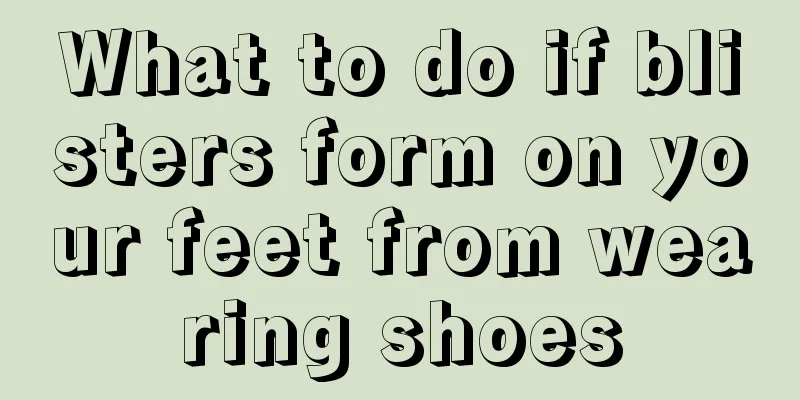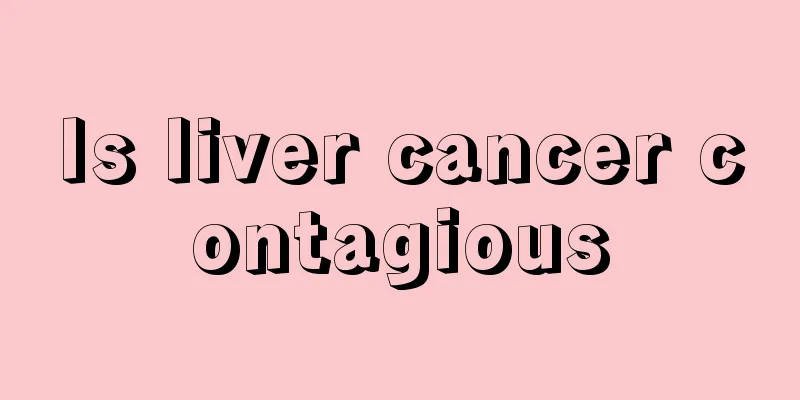What to do if blisters form on your feet from wearing shoes

|
Many people have experienced blisters on their feet caused by shoes rubbing against their feet while wearing them. Since blisters on the feet can cause great discomfort or even pain, they must be treated promptly. Many people simply prick the blisters and pour out the water inside, thinking that everything will be fine. This is a wrong idea, because in the process of dealing with blisters on the feet, in addition to popping them, you must also pay attention to cleaning and care! Causes of blisters Blisters occur when the skin is damaged by some reason, such as abrasions, burns, scalds, etc. It is a protective response made by the body to protect the underlying skin from damage and ensure smooth skin regeneration. The fluid in the blisters is tissue fluid. Long-term friction causes the permeability of some capillaries to increase, and some plasma proteins enter the tissue fluid, which in turn causes the osmotic pressure of the tissue fluid to increase, thereby increasing the amount of tissue fluid. The liquid in the blisters will gradually be absorbed by the body, and the skin on the surface of the blisters will gradually dry, form scabs and finally fall off. The lower layer of skin becomes the outer layer of skin. During this process, if the blisters burst, the inner layer of the skin is likely to be infected by bacteria. Treatment of blisters When blisters appear on the skin, you can generally do the following: Don't think that the blister will be healed by puncturing it and letting the fluid inside flow out. On the contrary, you should try to keep the blisters intact, allow the liquid in the blisters to be absorbed by themselves, and allow the blister epidermis to dry, form scabs, and fall off on its own. If the blisters are caused by tight shoes or the child is wearing new shoes and the blisters are rubbed by the edges of the shoes, you should protect the blisters with gauze pads on the affected areas and change into appropriate shoes and socks. If the blister is broken before the underlying skin has regenerated, the affected area should be cleaned, disinfected and bandaged with clean gauze immediately. If the blisters are caused by burns or scalds, or if the blisters are large, you should go to the hospital and ask a doctor for treatment. If the skin around the blisters becomes red and swollen or the blisters become purulent, it means that the skin at the blister site has been infected and you should go to the hospital for treatment immediately. Prevention of blisters Don't think that the blister will be healed by puncturing it and letting the fluid inside flow out. On the contrary, you should try to keep the blisters intact, allow the liquid in the blisters to be absorbed by themselves, and allow the blister epidermis to dry, form scabs, and fall off on its own. If the blister is broken before the underlying skin has regenerated, the affected area should be cleaned, disinfected and bandaged with clean gauze immediately. If the skin around the blisters becomes red and swollen or the blisters become purulent, it means that the skin at the blister site has been infected and you should go to the hospital for treatment immediately. |
<<: What to do if your feet are rubbed by shoes
>>: What to do if your feet itch when wearing shoes in summer
Recommend
What can’t you eat if you have a cold body? You must avoid these 5 kinds of food
Body cold is a cold symptom that can be serious o...
How to remove musty smell at home
In the rainy season now, a strong musty smell wil...
What are the signs of pancreatic cancer
What are the signs of pancreatic cancer? In our d...
What's going on with my right lower eyelid twitching?
The lower eyelid of my right eye is always twitch...
What are the symptoms of lip allergies?
Lip allergy is not uncommon. Common symptoms incl...
Wash your hair with ginger and white vinegar
Washing your hair with ginger and white vinegar c...
How to remove the fishy smell from bird's nest
Don’t think that the taste of bird’s nest is just...
There are many signs of cerebral hemorrhage. Here are 4 tips to help you prevent it in advance
Cerebral hemorrhage, also known as cerebral hemor...
Why not eating breakfast will make you fat
Many people choose not to eat breakfast in the mo...
Why do I see things blurry? Could it be caused by a disease?
Eyes are a way for us to observe the external env...
Sesame oil can cure rhinitis in four ways
Rhinitis is a very uncomfortable disease. When it...
Sudden weight loss! Beware of sub-health
Health doctors say that sub-health receives relat...
Can skin cancer be cured if it spreads?
Skin cancer is a very scary malignant tumor disea...
What to eat with snails
Snails contain protein and calcium, and if they a...
What are the incidence and mortality rates of prostate cancer
What are the incidence and mortality rates of pro...









